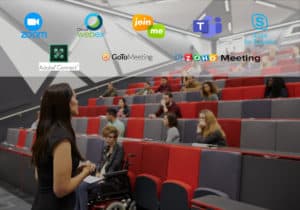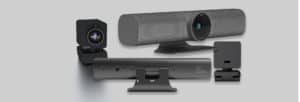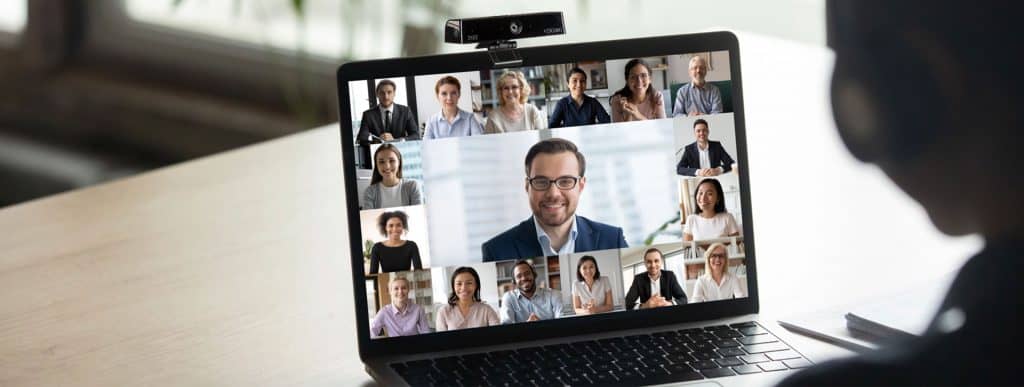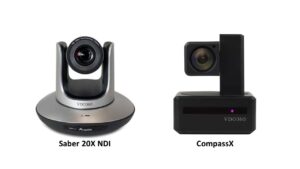Welcome to VDO360, your premier destination for motion-tracking webcams designed for remote learning! Are you an educator looking for innovative tools to enhance your virtual teaching experience? Or perhaps you’re a student seeking a webcam that effortlessly follows your movements? Look no further! Our motion-tracking webcams are here to revolutionize your remote learning journey.
Say goodbye to static webcams and hello to dynamic teaching experiences! Introducing our state-of-the-art motion tracking camera, specifically designed for remote learning environments. Our motion-tracking webcam intelligently detects and follows your movements, ensuring you’re always focused and delivering engaging content to your students. With this webcam, you can create an immersive and interactive virtual classroom, precisely capturing every detail of your lessons.
Are you looking for a webcam with built-in motion-tracking capabilities? Look no further than our cutting-edge webcam with motion-tracking technology. Experience the freedom of movement as our webcam seamlessly tracks your every move, ensuring you’re always center stage. This innovative solution eliminates manual adjustments, allowing you to focus on your teaching or learning without interruption.
Our auto-tracking webcam takes remote learning to new heights. With its advanced tracking features, you can navigate the virtual classroom effortlessly, capturing every gesture and expression. No more worrying about being out of frame or missing important visual cues. Our webcam is your trusted companion, providing a seamless and interactive learning experience.
Experience the power of a tracking webcam that enhances your remote learning journey. Embrace the future of learning and captivate your audience with VDO360’s motion tracking webcams. Whether you’re a teacher or a student, our motion-tracking webcams are designed to elevate your online education experience.
Upgrade your virtual classroom today with our motion-tracking webcams! At VDO360, we understand the importance of engaging in remote learning experiences. Our range of motion-tracking webcams is meticulously crafted to meet your unique needs, providing you with the tools to deliver impactful lessons and connect with your students.
Elevate your remote learning experience today! Unleash the potential of remote learning with VDO360’s motion tracking webcams. Let your movements take center stage and captivate your audience. Say goodbye to static webcams and hello to dynamic teaching and learning.
Motion Tracking Webcams for Remote Learning
You’ve probably heard of Motion Tracking Webcams for Remote Learning, but what exactly are they and how do camera auto-tracking devices work? Read on to discover the benefits these webcams provide and learn how they improve classroom engagement. This article will also help you choose the right motion-tracking webcam for your remote learning program.
How Motion Tracking Webcams Increase Engagement
 Suppose you are looking for ways to increase engagement in your online classroom. In that case, you may consider using motion-tracking webcams or an auto-tracking camera system. These cameras can swivel around the room and focus on the person speaking. This is especially useful if your audience is spread across an ample space. Typically, these cameras are used during remote meetings, where the cameras can help make the interaction feel more natural.
Suppose you are looking for ways to increase engagement in your online classroom. In that case, you may consider using motion-tracking webcams or an auto-tracking camera system. These cameras can swivel around the room and focus on the person speaking. This is especially useful if your audience is spread across an ample space. Typically, these cameras are used during remote meetings, where the cameras can help make the interaction feel more natural.
A motion-tracking webcam requires several layers of processing. Not to worry however, all this happens behind the scenes. First, it needs to be able to classify input patterns and correlate them to effective states. Then, it needs to be able to recognize the different levels of engagement in learners.
These methods use various sensors to capture different learner engagement features. They use facial expressions, eye tracking, physiological data, eye tracking, voice, postures, and more. Additionally, the data is collected in a learning environment without interrupting the learner’s learning experience. The different methods can be grouped into sensor data analysis, computer vision-based methods, and log-file analysis.
What is a Motion Tracking Webcam
 Motion-tracking webcams are a great way to improve the quality of your video recordings. Using a webcam with an auto-tracking feature can help instructors see what students see and hear in a room that is far away. This type of webcam can help instructors zoom in and out; the focus of the webcam can be easily adjusted by switching to manual mode. The main disadvantage of this webcam is that its focal length is not as wide as a standard webcam.
Motion-tracking webcams are a great way to improve the quality of your video recordings. Using a webcam with an auto-tracking feature can help instructors see what students see and hear in a room that is far away. This type of webcam can help instructors zoom in and out; the focus of the webcam can be easily adjusted by switching to manual mode. The main disadvantage of this webcam is that its focal length is not as wide as a standard webcam.
Teachers may have a few reservations about using this type of camera. Some teachers find the technology overwhelming, while others wonder if it’s appropriate for a school. However, many institutions are adapting to distance learning using auto-tracking webcams. They are a great way to record lectures since they don’t require human interaction and can be set up quickly.
For a medium-sized classroom, a generic webcam can record discussions and lectures. It has a built-in microphone for audio and a stand for moving the camera. It’s tethered to the computer in the room via a USB cord. However, the fixed focal length makes it difficult to see accurate detail. However, for most situations, a generic webcam is an adequate solution.
How Motion Tracking Webcams Work
 How motion-tracking webcams work for remote education is a growing concern. While they’re not a perfect solution, they offer an option that’s better than nothing. They provide an excellent image and offer a primarily hands-off experience for the instructor. A PTZ camera can be mounted in the back of a room and follow the instructor as he or she moves around the front of the room. Alternatively, the instructor can switch to a manual function so that they can control the camera’s zoom and pan.
How motion-tracking webcams work for remote education is a growing concern. While they’re not a perfect solution, they offer an option that’s better than nothing. They provide an excellent image and offer a primarily hands-off experience for the instructor. A PTZ camera can be mounted in the back of a room and follow the instructor as he or she moves around the front of the room. Alternatively, the instructor can switch to a manual function so that they can control the camera’s zoom and pan.
In remote learning, using cameras can improve students’ engagement. A recent study revealed that 53% of students favored using a webcam in distant learning. Most cited increased participation as their reason for wanting the device. However, some students don’t have access to a computer or the internet or don’t have a good data plan to use a webcam. These issues are not unique to remote learning, but they highlight existing inequities in education.
While auto-tracking cameras offer advantages for remote learners, they can also pose challenges for teachers. Some teachers may find using such cameras too invasive or disruptive. Nevertheless, these cameras have helped many institutions adapt to remote learning.
Motion Tracking Features
Using Motion Tracking Features of webcams for distance learning is a powerful tool to help educators create interactive online classes. A recent study by an associate professor of learning technology at the University of Massachusetts Amherst identified three critical concerns when using webcams for remote learning. These concerns include issues of access that technology introduces and inequity. For example, some students may not have webcams or reliable internet access. Others may be on a limited data plan. These barriers to learning highlight existing inequities in education.
Another essential benefit of Motion Tracking Features is that students can take breaks, which helps them avoid “Zoom fatigue.” Using an auto-tracking webcam means students are less likely to turn off the video during a lecture, and they can turn it back on during their breaks.
Auto Tracking Webcams for Lectures
Auto-tracking webcams can make interactions between students and instructors easier in the classroom. The camera, which automatically follows the instructor, can be mounted in the back of the room. It can be set to follow the instructor around the room automatically or manually. While this provides excellent visibility to the instructor, the remote students often find it distracting to see themselves displayed alongside the instructor’s lecture slides.
The TridentAI is a video conference camera with voice tracking suitable for medium-sized classrooms. It has a built-in condenser microphone and a stand that moves with the camera. It is connected to the room computer via a USB cord. The camera’s fixed focal length makes it hard to view accurate detail. Still, a generic webcam can work in most situations.
Auto-tracking cameras have made it easy to record lectures and other educational sessions. Previously, colleges and universities had to hire students to operate their cameras, which is expensive and unreliable. Auto-tracking webcams allow instructors and students to follow along in real time. These webcams can also be uploaded to learning management systems like LMSs.
Most Popular Tracking Webcam Use Cases
The first is that technology can make education more convenient for instructors and students. In addition to making learning more convenient, technology also makes it easier to communicate with one another. For example, an instructor can encourage students to turn on their cameras early in the course. There are many use cases for a motion-tracking webcam in remote learning. Another use case is to engage students in icebreaker activities. They can ask fun questions like “what was your favorite cartoon growing up?”
Higher education institutions have already begun using auto-tracking cameras to record lectures and other classes. These cameras are easy to install and use and provide an automated, non-invasive way to record lessons. They also work well with learning management systems. A company like SimplTrack2 offers easy-to-use management software and an intelligent auto-tracking system.
A webcam with autofocus is excellent for capturing close-ups. These cameras usually have glass lenses to produce a clear, crisp image. Higher-quality auto-focus models can deal better with different light sources and busy backgrounds.
Benefits of a Motion Tracking Webcam
Using a motion-tracking webcam during remote learning offers many advantages. This camera allows students to turn on the camera during breaks to avoid the so-called “Zoom fatigue.” As a result, students are less likely to turn off the video during class.
Using a webcam in remote learning should also consider the needs of students with disabilities. Many resources support students with disabilities, including campus disability centers. In general, however, teaching practices must be able to meet the needs of a diverse student body.
While there are many benefits to using a webcam for remote learning, a quality camera is vital to a successful teaching experience. Investing in a high-quality camera can make your students feel you are actually there, enhancing their learning experience. You can even add animation to your lessons. This is a great way to make your lessons more fun and engaging for your students.
Motion Tracking Webcams by VDO360
Motion Tracking Webcams for Remote Learning are available with built-in microphone arrays and are compatible with many operating systems. These cameras are perfect for remote learning because they are designed from the ground up to work seamlessly. They are equipped with advanced features like a far-field microphone array. They also have a pass-through USB port for easy connectivity.
These cameras feature Natural Vision auto-framing capability that reduces video conferencing fatigue and keeps remote meeting participants engaged. This unique feature automatically adjusts the camera’s position based on the teacher’s movements. These cameras are designed for educational environments, and 4k USB Video Cameras like the 3SEE feature up to 4K HD resolution, USB connectivity, 120-degree FOV, and an aluminum case.




